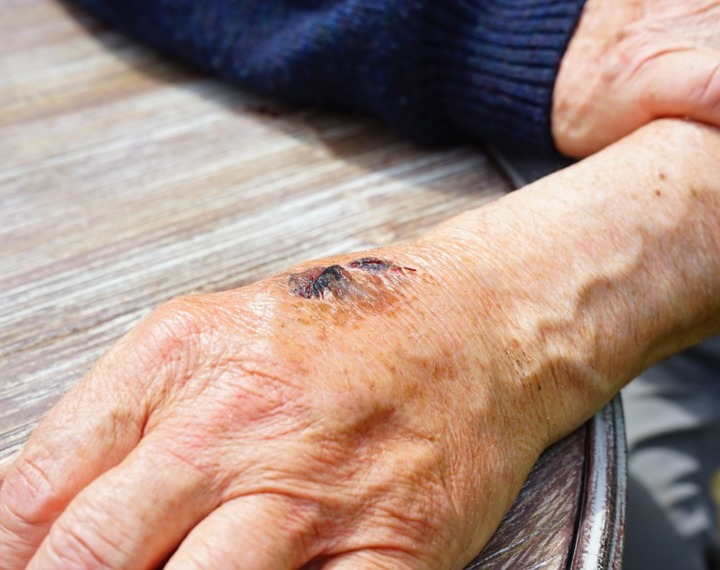How to Prevent, Clean & Manage Wounds in Your Care Home
 Regardless of how much you attempt to protect care home residents from accidents, sometimes injuries do occur, which is why it is crucial that you and your team are always prepared for the unexpected, as you never know what could happen.
Regardless of how much you attempt to protect care home residents from accidents, sometimes injuries do occur, which is why it is crucial that you and your team are always prepared for the unexpected, as you never know what could happen.
As well as ensuring that you are well stocked up with bandages and dressings, it is also crucial that you ensure the entirety of your care home team are trained when it comes to caring for wounds. This should include implementing good hygiene practices to minimise infection risk, as well as understanding a range of methods for dressing wounds properly.
It is also important to ensure that your team is aware that when it comes to wound healing, older people are more likely than younger people to experience delayed wound healing. There are many reasons why older people tend to heal more slowly than younger people, including reduced skin elasticity and delayed inflammatory response. Medications can also be to blame for this.
Why might wound care be necessary for a care home resident?
When it comes to learning about wound care, it is vital to ensure that your team understands how wounds may occur, so that wherever possible, these can be prevented. For preventing the majority of accidents, risk assessments can be highly beneficial, as they can allow you to determine where the biggest risks are, and find ways to mitigate these risks, keeping care home residents safer while in your care.
You can also use a risk assessment to determine what wounds are likely to occur so that you can ensure that the correct bandages are stocked for dealing with the accidents that are likely to occur. Usually, the most common causes of wounds in care homes are trips and falls, pressure ulcers and burns.
Why is good hygiene important?
Wounds can easily become infected, which is why following good hygiene practices is so vital. Wounds that don’t become infected tend to heal more quickly and are less painful. When a wound becomes infected, it can lead to all sorts of complications, as well as pain.
Taking special care of wounds is important to ensure that wounds do not become infected. The key to doing this is ensuring that your care home follows good hygiene practices, such as making sure that all team members wash their hands with antibacterial soap and apply gloves before cleaning or checking on wounds. When it comes to hygiene, it is also important to ensure that when a resident is bathing, their wound is kept clean and dry, as water can slow down the healing process.
How can wound healing be aided?
For helping to ensure that wounds heal quickly, care home staff can support residents in a number of different ways. These include the taking the following steps:
- Changing wound dressings on a regular basis, to help reduce the risk of infection in open wounds and sores.
- Selecting the correct dressing or bandage for each different wound, which can help to speed up healing and prevent infection from occurring.
- Watching for signs of infection, such as a high fever, vomiting, redness, and pain, and seeking immediate medical help.
- Keeping on top of other conditions that can make wound healing slower, with the use of effective medication and monitoring.
- Ensuring that residents follow a healthy diet that is high in vitamins and minerals, as well as ensuring that they take any vitamins and supplements recommended to help with the process of wound healing.
- Understanding the skin healing pattern and checking for signs that the skin is failing to heal properly. In this instance, consulting a doctor would be beneficial to ensure that the wound does not begin to get worse.
There you have it, everything that you should know about effectively managing wound care for your care home residents.




